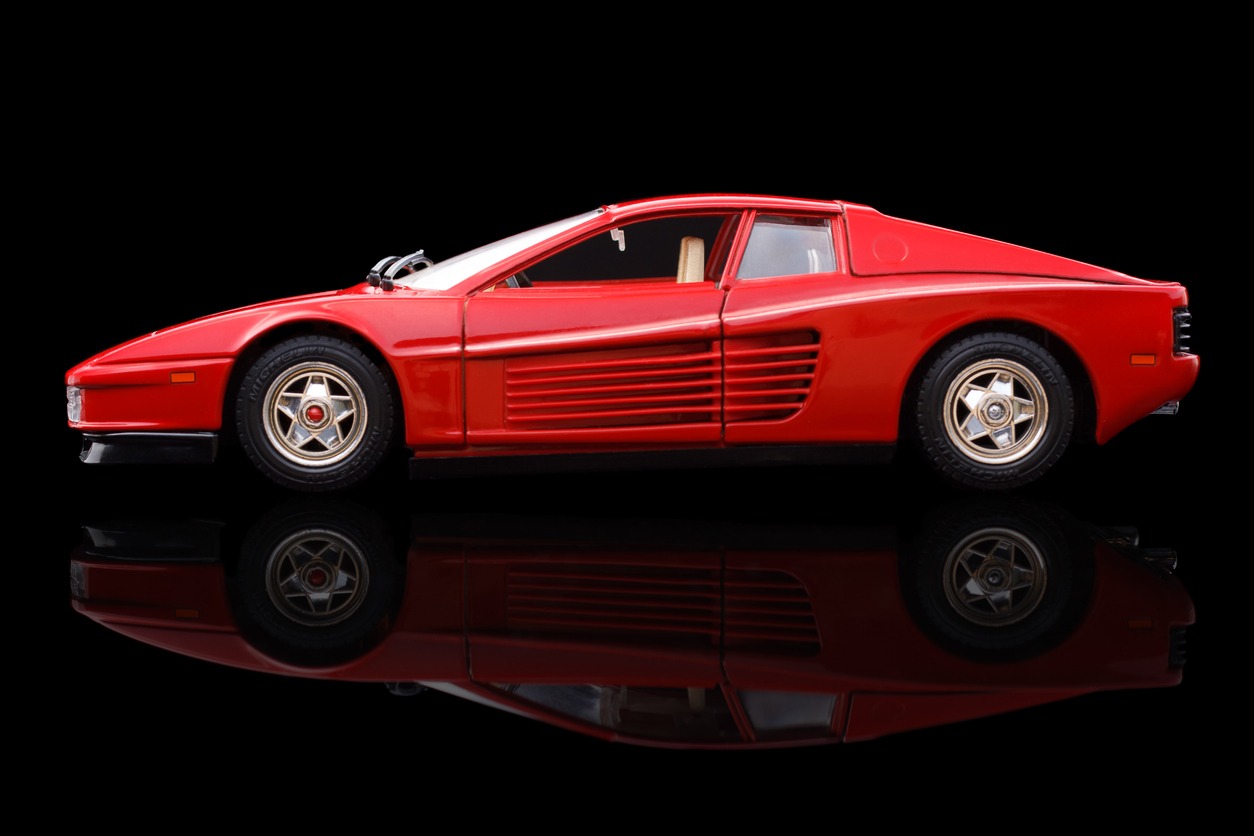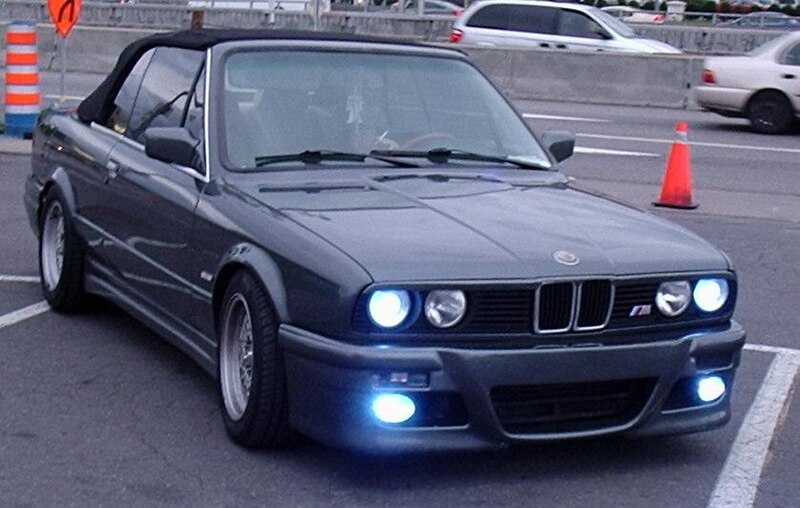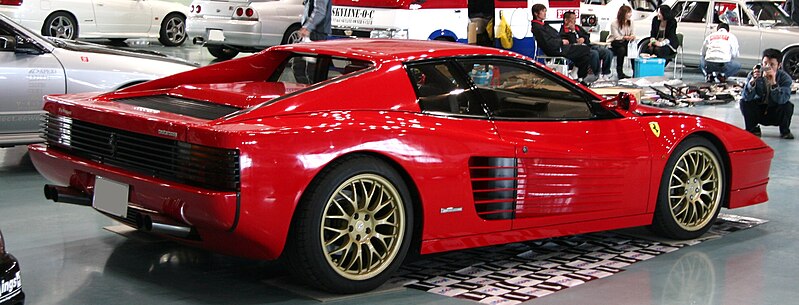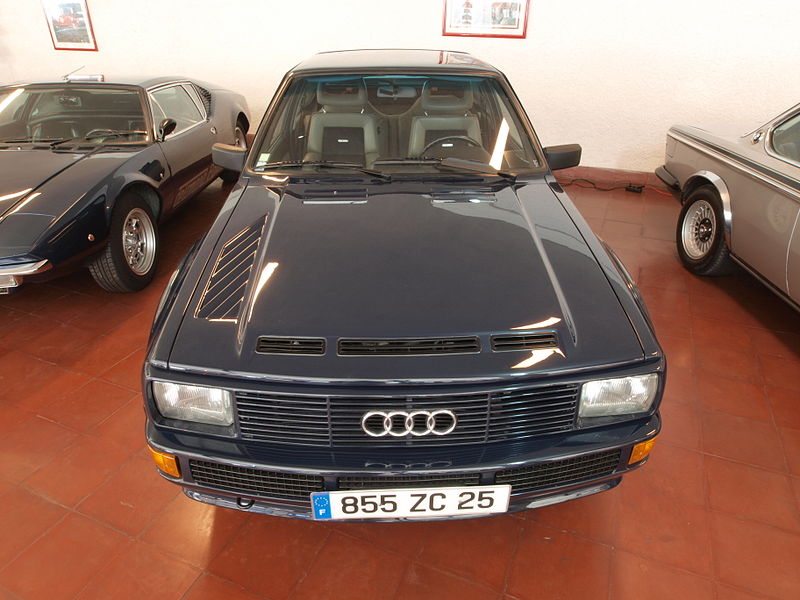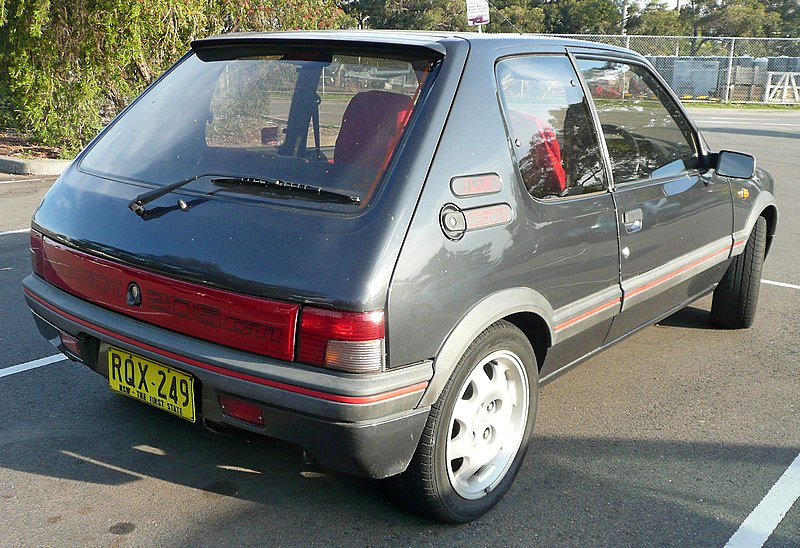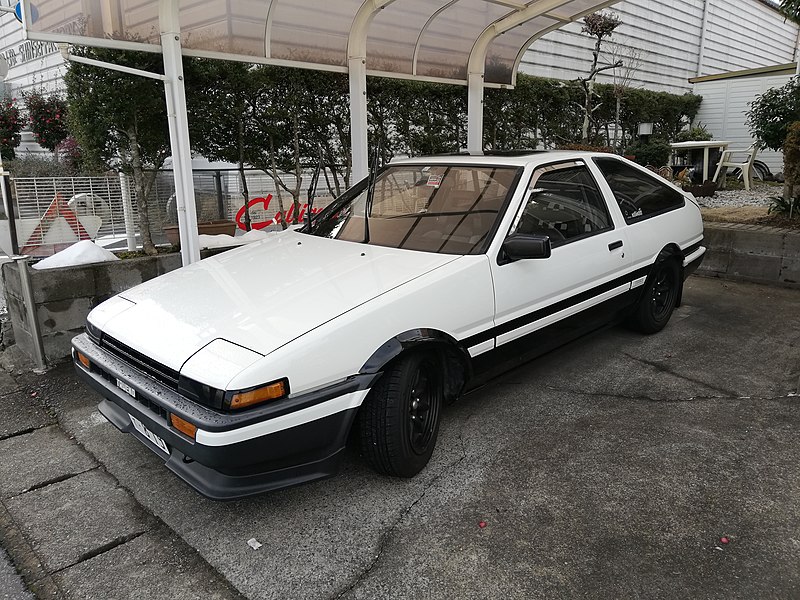The 80s was a fun time – big hair, shoulder pads, aerobics craze, Rubik’s cubes, phones the size of bricks – these things usually define the decade. And when it comes to cars, the hatchback was in, sports cars and coupes were out. It was a transformative time for the car industry, as both innovation and aesthetics evolved.
Let’s explore some of the best cars made in the 1980s, considering their design, performance, and cultural significance.
BMW M3 (E30; 1986-1991)
The BMW M3, particularly the E30 model, is a quintessential 80s car that blended luxury, performance, and practicality. Introduced in 1986, the E30 M3 was initially designed as a homologation special for Group A Touring Car racing.
It quickly became renowned for its high-revving 2.3-liter four-cylinder engine, producing 192 horsepower. These engines varied from 2.3 to 2.5 liters, with the top-end Sport Evolution version (released in 1990) boasting up to 238 horsepower (177 kilowatts) and 177 pound-feet (240 Nm) of torque, and achieving a 0 to 60 mph (97 km/h) time of 6.2 seconds.
The car’s balanced handling, thanks to its rear-wheel-drive layout and sport-tuned suspension, made it a favorite among driving enthusiasts. The M3’s boxy yet elegant styling, with its distinctive flared wheel arches and ducktail spoiler, has become iconic.
Ferrari Testarossa (1984-1991)
A symbol of 80s excess and style, the Ferrari Testarossa is one of the most recognizable cars of the decade. Its standout features included eye-catching pop-up headlights and distinctive side fins or blades on the air intakes, making it an instantly recognizable mid-engine Italian masterpiece.
Launched in 1984, it was powered by a 4.9-liter flat-12 engine that delivered 390 horsepower, enabling it to reach speeds of over 180 mph. It can accelerate from 0 to 60 mph (97 km/h) in 5.2 seconds and complete the quarter-mile in 13.5 seconds. Adding to its charm was the five-speed manual transaxle, complete with a classic gated shifter.
The Testarossa was famous for its side strakes and wide stance, which not only contributed to its aggressive appearance but also improved engine cooling. Its performance and dramatic design made it a staple of pop culture, featuring in numerous movies and TV shows.
Audi Quattro (1980-1991)
The Audi Quattro revolutionized rally racing and brought four-wheel-drive performance to the public road. Introduced in 1980, it was the first car to combine four-wheel drive with a turbocharged engine, a 2.1-liter inline-five producing 200 horsepower.
Notably, the Quattro was the first car to utilize the new World Rally Championship rules that permitted four-wheel drive. It made a dramatic entrance in the rallying scene in 1981, with Michèle Mouton achieving the distinction of being the first woman to win a WRC rally. The Quattro itself clinched championship titles in 1982 and 1984. A hand-built marvel, distinct from the standard Audi 80, it sold 11,452 units over 11 years.
The Quattro’s angular design and boxy proportions typified 80s aesthetics, and its impact on automotive engineering cannot be overstated. Despite its high cost, it became a coveted vehicle, and remains one of the most influential and iconic rally cars to this day.
Fiat Panda (1980-present)
Introduced at the 1980 Geneva Motor Show, the Fiat Panda stood out with its square-edged design, reminiscent of the Quattro but distinct in its own right.
This became even more apparent with the launch of the Panda 4×4. The car’s design, entrusted to Giorgetto Giugiaro at Italdesign, was guided by a utilitarian concept similar to the Renault 4 or Citroen 2CV. The goal was to create a vehicle that was no heavier or costlier than the Fiat 126 it was replacing, while being versatile enough to fit in anywhere. Giugiaro’s vision even included a boot large enough to carry two 50-litre demijohns of wine while seating four passengers.
The Panda’s simplicity initially led Fiat’s marketing head to believe that the interior trim was missing. Its design emphasized basic functionality, with flat glass used throughout for simplicity and weight reduction, and nearly flat body panels.
Giugiaro likened the Panda to a pair of jeans – simple, practical, and unpretentious, with a focus on functionality akin to a military helicopter. The Panda is a masterclass in efficient design and cost-effective construction.
Peugeot 205 GTi (1984-1994)
The Peugeot 205 GTi is often celebrated as the quintessential hot hatch of the 1980s, a fact reflected in its current market value. It was available with two engine options. While the 1.9-litre variant is frequently praised, some enthusiasts prefer the balance offered by the 1.6-litre version.
Contrary to popular belief, its design wasn’t the work of Pininfarina but an in-house creation, with Paul Bracq designing the interior. While Pininfarina did contribute to the 205 Cabriolet, the GTi model remains the most acclaimed version.
When it was launched in 1984, the Peugeot 205 GTi quickly earned acclaim from motoring journalists for its agile handling and lively engines. It initially came with a 1.6-litre petrol engine delivering 105hp. In 1986, Peugeot introduced a more potent 1.9-litre engine with 130hp. Regardless of the engine choice, the 205 GTi promised an enjoyable driving experience.
Porsche 959 (1986-1993)
The Porsche 959 stood out as the pinnacle of automotive technology in its era. Released in 1986, it was among the first high-performance vehicles to feature all-wheel drive, a twin-turbocharged flat-six engine, and an adjustable suspension system. This rear-engine marvel was the first in the 911 series to introduce water-cooling for the cylinder heads, while the engine block remained air-cooled, a design that persisted until the 996.
Producing 450 horsepower, it was one of the fastest cars of its time, with a top speed of 197 mph. The engine’s performance varied between the standard and ‘S’ models, delivering between 444 to 508 horsepower (326.6 to 373.4 kilowatts) and 369 pound-feet (500 Nm) of torque, with some reports suggesting these figures might be understated.
Despite its reputation as a supercar capable of exceeding 200 mph (322+ km/h), the 959 also served as the foundation for the 1986 Porsche 959 Paris-Dakar Rally car and the 961 race car. Only 345 units of the 959 were ever produced. Its blend of cutting-edge technology and performance made it a benchmark for future supercars.
Toyota AE86 (1983-1987)
The Toyota AE86 is a prime example of how the right combination of features can turn an ordinary car into a legend. This model, based on the fifth-generation Toyota Corolla, deviated from its front-wheel-drive relatives to follow a different path.
Toyota opted not to go the easy route with just another front-wheel-drive coupe. Instead, the AE86 was equipped with a high-revving 1.6-litre, 16-valve twin-cam engine capable of 7,800 rpm, paired with a five-speed manual gearbox. It also featured Macpherson strut front suspension, an even 50:50 weight distribution, and the option of a limited-slip differential. This setup made it ideal for drifting, a sport that was growing in popularity. It went on to become a cult classic for drifting enthusiasts.
Launched in 1983, the AE86 arrived at a time when the market was leaning towards front-wheel-drive hot hatches. However, the AE86 set itself apart with features like all-round disc brakes, coil springs, and a limited-slip differential. Until today, the AE86 is revered in the drift scene, and its status is reflected in its market value.
Buick GNX (1982-1987)
Buick, often seen as a brand favored by an older demographic and known for its understated vehicles, made a splash with the Regal. If you’re in Europe, you might recognize it as the Opel Insignia or the Vauxhall Insignia in the UK.
In 1987, Buick waved goodbye to the G-body platform with the striking Buick GNX. This all-black performance model, affectionately dubbed “Darth Vader’s car,” was a collaboration with McLaren Performance Technologies.
It boasted a 3.8-liter, turbocharged V-6 engine, modestly claimed to have 276 horsepower (206 kilowatts) at 4,400 RPM and 360 pound-feet (488 Nm) of torque at 3,000 RPM. However, in reality, it churned out over 300 horsepower. Its true claim to fame was its ability to zip through a quarter-mile in just 12.7 seconds at 113.1 mph (182 km/h), and go from 0 to 60 mph (97 km/h) in a mere 4.4 seconds. A limited run of only 547 GNXs were produced before GM decided to discontinue it.
Nissan Skyline GT-R R32 (1989-1994)
The Nissan Skyline name is legendary among car lovers, tracing its roots back to the 1950s. When the GT-R badge is added to the Skyline name, it transforms into a nearly invincible track beast.
The R32 GT-R, specifically designed for Group A racing, followed in the footsteps of the original 1969 GT-R by dominating motorsport events, earning the epic nickname “Godzilla.”
This model introduced the robust RB26 DETT engine – a 2.6-liter, twin-turbo, inline-six. Officially, it was rated at 276 horsepower and 260 pound-feet due to the “Gentlemen’s agreement,” but in reality, it exceeded 300 horsepower, with potential for much more. In its standard form, it could achieve 0 to 60 mph (97 km/h) in an impressive 5.3 seconds.
Lancia Delta Integrale (1982-1994)
The Lancia Delta Integrale, born from the world of rally, was a dominant force in the World Rally Championship and became a highly sought-after road car. Its turbocharged engine and sophisticated four-wheel-drive system provided exceptional performance and handling.
Lancia’s dominance in the World Rally Championship during the late 80s to early 90s was largely thanks to one superstar vehicle: the Delta Integrale. Piloted by rally legends like Juha Kankkunen and Miki Biasion, this four-wheel drive, turbocharged machine was nearly unbeatable on global rally stages, a legacy that began with the Delta HF in 1987.
While it wasn’t as wildly designed as the Stratos or 037, the Delta Integrale, originating from a modest Giugiaro-designed five-door hatchback, stood out with its aggressive bodykit and wide arches. Its production ceased in 1994, leaving a legacy that proved hard to match.
Lotus Esprit Turbo (1982-1988)
The Lotus Esprit is often regarded as one of Giorgetto Giugiaro’s masterpieces. It was Lotus’s second venture into mid-engined cars, powered by the same 2.0-litre engine used in the Eclat and Elite.
The S1 Esprit launched in 1975 with a fiberglass body and a steel backbone chassis, equipped with the Lotus 907 inline-four engine. Though initially lacking power due to its sub-1,000kg weight, early quality issues were sorted out when the S2 was introduced in 1979.
However, it wasn’t until the early 80s that Lotus introduced turbocharging, and the Esprit Turbo was born. Launched in 1982, this Esprit version offered excellent performance due to its turbocharged, four-cylinder engine. Its sharp, angular design and mid-engine layout gave it a futuristic look and outstanding handling characteristics. Various redesigns and the addition of a V8 engine kept the Esprit going strong until 2004.
BMW M5 (1985-present)
The modern BMW M5 may be a supercar in its own right, but it’s the first in this illustrious line that truly set the standard. Originating from the second-generation E28 5 Series – fun fact, partially designed using BMW’s sole payroll computer at the time – it was a real game-changer.
The M5, based on the 535i model of the distinct ‘sharknose’ 5 Series, enhanced its independent suspension and disc brakes with a remarkable addition: the straight-six engine, taken almost directly from the extraordinary M1 mid-engined supercar. This engine, delivering 286PS (210kW) from 3.5 liters, made the M5 the fastest saloon in the world at its debut at the Amsterdam Motor Show in 1985. Handcrafted in Bavaria, the E28 M5 is a collector’s gem, with just 2,241 units produced.
The E28 BMW M5 was a masterclass in understatement, yet it stood as one of the top performance cars of the 1980s. BMW intentionally kept its design low-key, aligning with the preferences of its mature target audience who favored a more conservative, well-suited saloon over anything flamboyant. The E28 M5 was also among the pioneers of the ‘Q-car’ concept – powerful performers disguised in subtle exteriors.
Lexus LS400 (1989-1992)
It might be surprising to learn that the Lexus LS400 actually hailed from the ’80s, not the ’90s. Toyota initiated its ambitious F1 project – symbolizing “Flagship” and “No.1” – as early as 1983, with a vision to outshine European and American luxury saloons in comfort, quietness, speed, and efficiency.
The project saw no constraints in budget or timeline and didn’t rely on existing Toyota components or platforms. Thousands of engineers and technicians were involved, creating 450 prototypes that underwent nearly two million miles of global road testing.
Debuting in January 1989 at the Detroit Motor Show under the new Lexus brand, the LS400 featured a 4.0-liter, 32-valve quad-cam V8 engine producing 250PS (184kW), and was equipped with all-round double wishbone suspension. Its interior boasted luxury with leather and walnut finishes, memory seats, and a holographically projected instrument panel.
The LS400 outperformed its BMW and Mercedes rivals in quietness, speed, and efficiency, quickly becoming the top-selling luxury saloon in the US for 15 of its first 17 years. Known for its exceptional durability, many LS400s have clocked over a million miles.
Jeep Cherokee XJ (1983-2001)
While the Wrangler often steals the spotlight, the XJ generation Cherokee truly stands out as the superior vehicle, playing a pivotal role for Jeep similar to the Range Rover’s impact on Land Rover in the previous decade. The Cherokee was groundbreaking for Jeep, being the first American car and Jeep’s first completely new design since the ’60s Wagoneer to adopt a monocoque construction.
Despite being over half a ton lighter, a meter shorter, and smaller in height and width than its predecessor, the SJ series, the Cherokee XJ remarkably offered almost the same passenger and cargo space. This impressive feat allowed Jeep to market it as a ‘sportwagon.’
However, the Cherokee didn’t sacrifice its rugged, off-road capabilities, equipped with transfer cases, four-wheel drive, and a powerful 4.0-litre straight-six engine. The only downside? The XJ Cherokee might be largely responsible for kickstarting the widespread SUV trend.
Conclusion
These additional cars from the 1980s underscore the diversity and innovation of the era. From luxury sedans and rally-bred hatchbacks to iconic sports cars and muscle cars, the 80s offered something for every type of car enthusiast. Each model not only represents the technological and design trends of its time but also holds a special place in the hearts of car lovers and collectors around the world.

